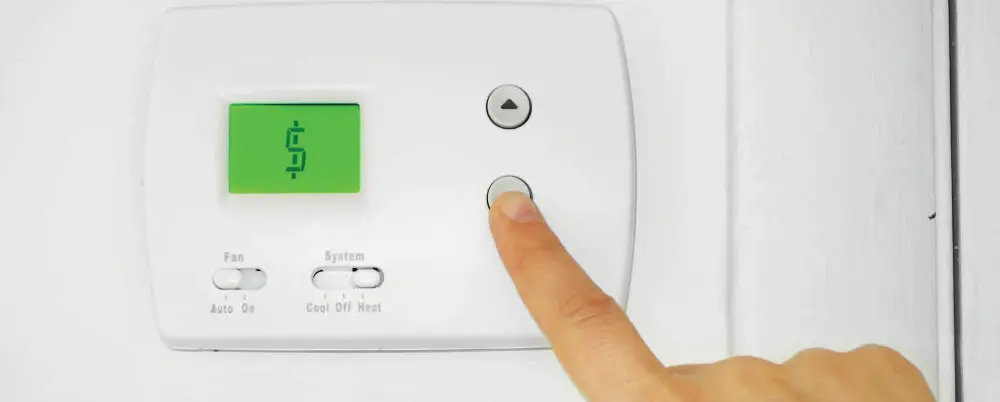
9 Ways to Lower Your Home Heating Cost This Winter
With the turn of a new year comes cold weather in Tennessee. Extreme temperatures result in higher energy use in your home, so here are a few tips to help keep your heating bill down and your family warm during the winter months.
Utilize the Curtains in Your Home
Utilize thick, insulating curtains to help reduce heat loss through windows. Close them at night to create an additional barrier against cold air and open them during the day to allow sunlight to naturally warm the room. Consider adding thermal lining to existing curtains for enhanced insulation.
Adjust Your Thermostat
Set your thermostat to a lower temperature during the day when you're not at home or at night when you're sleeping. Lowering the temperature by just a few degrees can lead to significant energy savings. Consider investing in a programmable thermostat to automate temperature adjustments based on your daily schedule.
Average temperature setting: The ideal temperature setting for your thermostat during the winter is typically recommended to be around 68°F (20°C). However, individual preferences may vary. Setting the thermostat to a lower temperature can result in significant energy savings. Each degree you lower your thermostat can save you about 1-3% on your heating costs.
Adjustments throughout the day: To maximize heat preservation and energy efficiency, consider adjusting your thermostat based on your daily schedule. When you're away from home or asleep, you can set the temperature lower, typically between 60-65°F (15-18°C), as you won't need the same level of heating. Programmable thermostats allow you to automate temperature adjustments based on specific time periods, ensuring comfort when you're home while conserving energy when you're not.
Smart Thermostats: Smart thermostats offer advanced features and convenience that can help reduce costs further. These devices can learn your schedule and preferences, automatically adjusting the temperature to optimize energy usage. They often provide remote access via smartphone apps, allowing you to control and monitor your thermostat even when you're not at home.
Seal Air Leaks
Identify and seal air leaks in your home, such as gaps around windows and doors, using weatherstripping or caulking. Pay attention to areas where drafts are noticeable, such as around electrical outlets, pipes, or vents. Insulating foam or door sweeps can help seal large gaps under doors.
Areas to check for air leaks: Common areas where air leaks occur include windows, doors, electrical outlets, vents, pipes, attic hatches, and gaps around baseboards. Pay attention to places where different building materials meet, as they can create potential gaps or cracks.
Candle test: The candle test is a simple method to detect air leaks. On a calm day, light a candle and move it around areas suspected of air leakage, such as window frames (don’t bring the flame close to any curtains!), door frames, or along baseboards. If you notice the flame flickering or moving, it indicates air movement caused by an air leak.
Fixing air leaks: Once you identify an air leak, there are several measures you can take to address it:
Weatherstripping: Use weatherstripping materials, such as adhesive-backed foam tape or door sweeps, to seal gaps around doors and windows. Apply weatherstripping to ensure a tight seal, preventing drafts and heat loss.
Caulking: Apply caulk to seal gaps and cracks around windows, doors, and other areas where different materials meet. Silicone or latex-based caulks are commonly used for sealing gaps.
Insulating foam: Expandable foam insulation can be used to fill large gaps around pipes, vents, or gaps in walls. This foam expands to fill voids and creates an airtight seal.
Outlet gaskets: Install foam gaskets behind electrical outlets and switch plates to prevent air leaks through electrical boxes.
Additional measures: Consider adding insulation to your home, particularly in attics, crawlspaces, and walls. Proper insulation helps maintain a consistent indoor temperature and minimizes heat loss through walls and ceilings.
Bundle Up!
Last but not least, bundle up! A warm sweater or down comforter can go a long way with the coziness factor, while allowing you to lower the temperature in your home.
Turn Down Your Water Heater
Lowering the temperature setting on your water heater can help reduce energy consumption and lower your heat bill. Consider adjusting the temperature to around 120°F (49°C), as most households find this temperature comfortable for daily use. By lowering the water heater temperature, you can avoid unnecessary heat loss and save on heating costs.
Replace Filters
Regularly replacing filters in your heating system is crucial for optimal performance and energy efficiency. Clogged or dirty filters restrict airflow, forcing the heating system to work harder and consume more energy. Check your filters monthly and replace them as recommended by the manufacturer or when they appear dirty. This simple maintenance task can improve airflow, reduce energy usage, and extend the lifespan of your heating system.
Maintain Doors And Windows Over Time
Doors and windows can develop gaps or deteriorate over time, leading to air leaks and heat loss. Regularly inspect these areas for any gaps, cracks, or worn weatherstripping. Replace damaged or worn weatherstripping, and apply caulk or sealant to seal gaps. Properly maintained doors and windows can significantly improve insulation, minimize drafts, and prevent heat loss, resulting in energy savings.
Close Unused Vents
Closing vents in rooms that are not frequently used can redirect airflow to the areas that require heating the most. By closing off vents in unused spaces, such as guest rooms or storage areas, you can optimize the heating distribution in your home and reduce energy waste. However, it's important to note that closing too many vents may disrupt the overall balance of your HVAC system, so it's best to consult with an HVAC professional to ensure proper airflow and system performance.
Check Your Attic Insulation
Adequate insulation in your attic plays a crucial role in preventing heat loss. Inspect your attic to ensure proper insulation levels and address any insulation gaps or damage. Consider adding or upgrading insulation if necessary, using materials such as fiberglass batts, cellulose, or spray foam insulation. Good attic insulation helps maintain a consistent indoor temperature, reduces heat transfer, and can lead to substantial energy savings.
Learn More Tips for Winter Preparedness
Putting forth the extra but simple effort to make your home winter-ready will create a world of difference when the season rolls around. For more ways to keep your home feeling cozy through the cold, check out some of our favorite extra initiatives.
Tennessee Insurance: Read More

What is an Auto Deductible?
October 9, 2024
When it comes to auto insurance, understanding the terminology is crucial to making informed decisions about your coverage. One term that often comes up in discussions about car insurance is the “auto deductible.” Read more

What Is Business Insurance?
December 10, 2024
Whether you are a small business owner or a seasoned entrepreneur, having the right insurance coverage is crucial to protect your assets and mitigate various risks. In this article, we aim to provide you with an in-depth understanding of what business insurance is, its significance, and how it can contribute to your company's success. Read more

What's The Difference Between Term and Whole Life Insurance?
May 31, 2024
Life insurance is a crucial aspect of financial planning, offering peace of mind and financial security for your loved ones in the face of life's uncertainties. In this article, we'll explore the key differences between these two options. Read more
